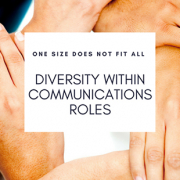The Importance Of Translating & Transcreating Your Marketing Campaigns
By: Veronica Figueroa Fernandez, PRSA Orlando Diversity & Inclusion Chair
We live in a globalized society, and while it feels like we are all interconnected, it is easy to forget that cultures and traditions vary from place to place. When developing a multicultural marketing strategy, it is important to have content properly adapted into the language being used in the target markets because content that resonates with readers in one market may miss the mark in another.
Spanish is the second most common language in the United States, with around 20 percent of the population in Florida speaking Spanish at home. That is an estimated three million people. After Spanish, Haitian Creole is the third most commonly spoken language in the state of Florida. The United States has a growing Hispanic population of more than 59 million people who are projected to reach a collective buying power of $1.7 trillion in 2020. Investing in quality translations for marketing to the U.S. Hispanic market is not just smart; it makes good business sense. Do you really want to leave that much of the population untouched by your messaging?
Poor translations can hurt your business and can potentially hurt the integrity of your brand, or cause a loss of revenue. In 2009, HSBC Bank invested millions of dollars in an advertising campaign in which they translated their tagline “Assume nothing” in their target countries. However, the translation came across as “Do Nothing,” and it cost HSBC $10 million to fix the issue. They eventually changed their slogan to “The World’s Private Bank.”
Avoid Machine Translation
While services such as Google Translate and Babel Fish are easy and simple to use, their results are often inaccurate. Sure, using the service while on an overseas adventure might help you have a simple conversation with someone, but because machine translation is literal, it translates text without applying any human intelligence to the translation. For many marketers on a budget, Google Translate is an attractive translation tool because there isn’t a cost attached to use it. And while machine translation can save you money upfront, the resulting lack of engagement on campaigns and social media posts with potential and existing customers coupled with the drops in conversion creates a false economy.
Your audience can tell you’ve used Google Translate. According to an analysis by Politico in early 2019, every Democratic candidate for U.S. president had significant spelling mistakes on their Spanish websites and some of the pages even read as if they were directly plugged into Google Translate. Despite their good intentions to represent and resonate with the Latino electorate, the errors produced the opposite effect, prompting Spanish speakers to question how seriously the candidates were vying for their vote.
Know Your Audience and Their Culture
When translating content, it is important to understand your audience, their values and their culture. As an example, there will be distinct variations in vocabulary and speech between Spanish-speaking countries. Because there are about 10 major Spanish dialects, and that Spanish is the main language spoken in 20 sovereign states, one territory, and a common language in the U.S., messaging tailored to a Mexican audience might not necessarily make sense to a Puerto Rican or a U.S. Hispanic market. It is crucial to your campaign’s success to knowing exactly who you are producing the translation for.
Translate VS. Transcreate
Very often, marketers use the words “translate” and “transcreate” interchangeably, and while both are common language service options, there is a subtle variation between the terms. Rather than a word-for-word translation, some of your marketing campaigns will need transcreation – the adaption of content while maintaining the existing tone, intent, essence and style of the original message to resonate with the intended international audience. In order for your campaign to find success, it must be tackled by a linguist who can inject their own creativity, authenticity, and cultural knowledge.
Increasing your sales strategically through transcreated content and campaigns can drive brand recognition in new markets. Back in the 1980s, car manufacturer Mitsubishi Motors launched the Mitsubishi Pajero SUV, named after the Pampas cat, but it had to swiftly change the name of the model to the less suggestive Mitsubishi Montero for Spanish-speaking markets.
Final Thoughts
At the simplest level, businesses and brands taking educated risks are often the ones attracting the attention and resonating with a wider audience. Whether you’re looking to translate or transcreate an upcoming marketing campaign, keep in mind the tips discussed and remember that being daring and creative can play an important part in your multicultural marketing strategy. If adapting your content to Spanish or another language is not something you have the ability to do in-house, please visit our chapter directory on the MyPRSA portal to connect with local agencies with those capabilities.










